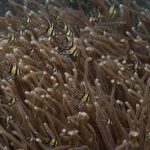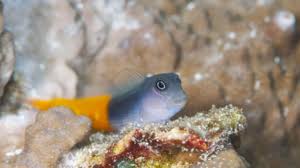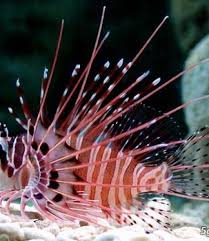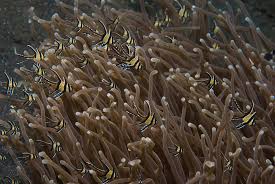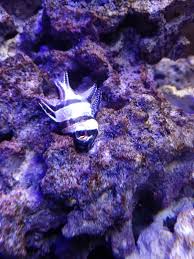In Chinese culture, dragons (lóng, 龙) are revered as symbols of strength, wisdom, and divine power. They hold a significant place in mythology, folklore, and religious practices. One of the most profound aspects of Chinese tradition is ancestor worship, a belief system that emphasizes honoring and respecting one’s forebears. This practice is deeply intertwined with the image of the dragon, which serves as a bridge between the past and present, the mortal and the divine.
Dragons in Chinese culture are not just mythical creatures but also spiritual entities that embody the virtues of family lineage, continuity, and reverence for one’s roots. This article explores the intricate relationship between dragons and ancestor worship, highlighting their role in lineage preservation, rituals, imperial heritage, and the collective cultural memory of the Chinese people.
1. The Dragon as a Symbol of Lineage and Ancestry
1.1. The Dragon as an Ancestor of the Chinese People
One of the most enduring beliefs in Chinese mythology is that the Chinese people are descendants of dragons. This belief originates from ancient legends:
- The Yellow Emperor and the Dragon Totem: According to legend, the Yellow Emperor (Huangdi, 黄帝), one of the mythical ancestors of the Chinese civilization, was associated with dragons. Many tribes under his rule carried dragon totems, which later merged into a unified national symbol.
- The Chinese People as “Descendants of the Dragon” (Lóng de chuánrén, 龙的传人): This phrase reflects national pride and ancestral connection, reinforcing the idea that the dragon represents the collective lineage of the Chinese people.
The association of dragons with ancestry underscores the idea that family heritage is sacred, forming the foundation of Chinese ancestor worship.
1.2. The Dragon as a Guardian of Family Bloodlines
In traditional Chinese society, maintaining a strong family lineage was of utmost importance. The dragon, as a protector of families, was often invoked in ancestral rites and family traditions.
- Clan Banners and Dragon Symbols: Many family banners and clan emblems incorporated dragon imagery, signifying their deep connection to noble heritage and the spirit of their ancestors.
- Dragon-Inspired Family Names: Some Chinese surnames, such as Long (龙), reflect a family’s association with the dragon, further strengthening their ancestral identity.
The dragon’s presence in family heritage serves as a reminder that ancestors continue to guide and protect their descendants.
2. Dragons in Ancestral Rituals and Worship
2.1. The Role of Dragons in Ancestral Temples
Ancestral temples (zōngcí, 宗祠) are sacred places where families honor their forebears. Dragons often appear in the architectural design and rituals of these temples.
- Dragon Motifs on Temple Roofs: Many ancestral halls have dragon carvings on their roofs to signify protection from malevolent forces and a connection to divine power.
- Dragon Incense Burners: Some families use dragon-shaped incense burners in ceremonies, symbolizing their prayers rising to the heavens.
These elements reinforce the idea that dragons act as mediators between the living and the spirits of the deceased.
2.2. The Dragon in Qingming Festival (Tomb-Sweeping Day)
During the Qingming Festival (清明节), families visit ancestral graves to pay respects. Some of the practices associated with dragons include:
- Dragon-Kite Flying: In some regions, flying dragon-shaped kites is believed to send messages to ancestors in the sky.
- Dragon-Inspired Food Offerings: Certain foods offered to ancestors, such as dragon-shaped pastries, symbolize the enduring power of family connections.
Through these customs, dragons maintain their role as spiritual guides in ancestor worship.
3. Dragons and Imperial Ancestry: The Emperor as the “Son of the Dragon”
3.1. The Mandate of Heaven and the Dragon Throne
In imperial China, the emperor was considered the “Son of the Dragon”, embodying the will of heaven and acting as a link between the divine and the earthly realm.
- The Dragon Throne: The emperor’s throne was decorated with dragon imagery, reinforcing his divine ancestry.
- Dragon Robes and Imperial Symbols: Only the emperor was allowed to wear yellow dragon robes, signifying his sacred status.
This connection to the dragon legitimized the emperor’s rule and reinforced the idea that ruling families were chosen by the ancestors and the gods.
3.2. Imperial Ancestral Worship and Dragon Rituals
Chinese emperors performed elaborate ceremonies to honor their ancestors, often invoking dragon imagery:
- The Temple of Heaven (天坛): This site, where emperors prayed for good harvests and prosperity, featured dragon designs to symbolize cosmic balance.
- Dragon Dances in Court Rituals: These performances during major ceremonies were meant to invoke the blessings of ancestors and celestial spirits.
Through these imperial traditions, dragons reinforced the link between governance, ancestry, and divine will.
4. Dragons in Family Values and Confucian Teachings
4.1. The Dragon as a Model of Filial Piety
In Confucianism, filial piety (xiào, 孝) is a core virtue, emphasizing respect and devotion to one’s elders and ancestors. Dragons often symbolize this value in Chinese folklore:
- The Dragon and the Dutiful Son: Some myths tell of dragons rewarding filial children with wisdom or protection, reinforcing the idea that honoring one’s parents leads to prosperity.
- The Dragon’s Role in Family Hierarchies: As powerful beings, dragons embody the structured respect within families, mirroring Confucian ideals of obedience and reverence.
By representing these virtues, dragons encourage descendants to uphold their family’s legacy with honor.
4.2. The Ancestral Teachings of the Dragon and Phoenix
In traditional Chinese thought, the dragon and phoenix represent the ideal balance in family relationships:
- The Dragon (Fatherly Strength): Symbolizing protection and leadership, the dragon represents the patriarchal role in upholding ancestral traditions.
- The Phoenix (Maternal Nurturing): Representing grace and harmony, the phoenix complements the dragon, ensuring that family values are passed down.
Together, they highlight the importance of maintaining ancestral teachings through unity and respect.
5. Dragons in Modern Chinese Ancestral Practices
5.1. The Dragon as a Symbol in Modern Ancestral Worship
Even in contemporary China, dragons continue to appear in ancestral veneration practices:
- Digital Ancestral Tributes: Online memorials and virtual ancestral halls often feature dragon imagery to symbolize eternal family bonds.
- Dragon-Inspired Family Crests: Many modern Chinese families still use dragon symbols in their family crests and genealogy books.
5.2. The Revival of Dragon Rituals
As interest in traditional culture grows, dragon-themed ceremonies are making a comeback:
- Dragon Boat Festivals Honoring Ancestors: Originally dedicated to the poet Qu Yuan, these races also serve as a tribute to ancestral spirits.
- Dragon Symbolism in Ancestral Reunions: Family gatherings often include dragon dances to celebrate heritage and unity.
Through these modern adaptations, dragons continue to serve as a vital link between past generations and present-day descendants.
Conclusion
Dragons have long been central to Chinese cultural identity, serving as symbols of ancestry, lineage, and the deep-rooted tradition of honoring one’s forebears. From imperial rituals to family traditions, their presence reinforces the sacred duty of preserving and respecting the past.
Even in the modern world, dragons remain a powerful representation of ancestral guidance and spiritual continuity, reminding generations of the enduring connection between humans, their lineage, and the cosmic forces that shape their destiny. In this way, the legacy of the dragon continues to inspire and unite families across time, ensuring that the values of ancestor worship remain a vital part of Chinese culture.


